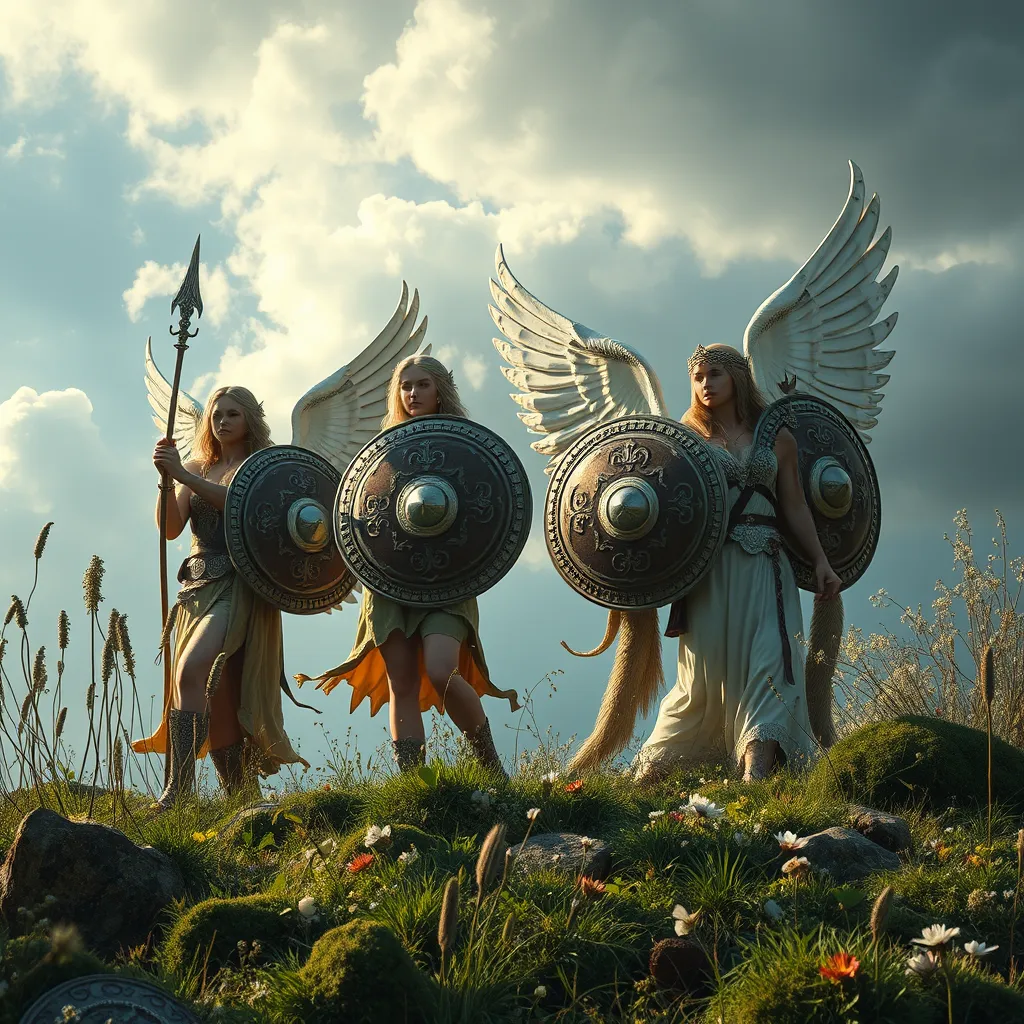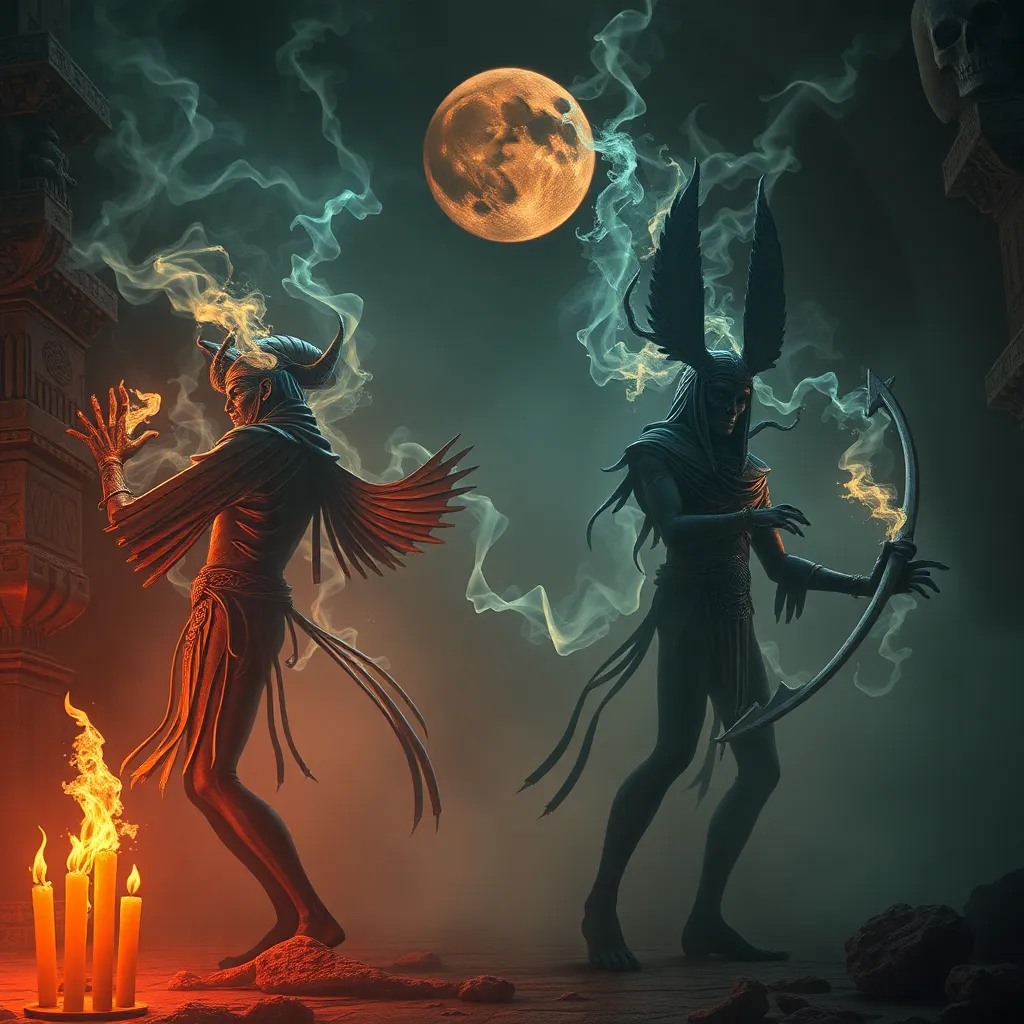The Valkyries’ Connection to Nature: Exploring the Relationship Between the Shield Maidens and the Natural World
I. Introduction
The Valkyries are among the most intriguing figures in Norse mythology, often depicted as powerful female warriors who serve the god Odin. These shield maidens have captivated imaginations for centuries due to their dual roles as both fierce combatants and guides to the afterlife. In Norse culture, nature was not merely a backdrop but a vital force intertwined with existence, influencing beliefs, rituals, and daily life.
This article aims to explore the profound relationship between Valkyries and the natural world, delving into their historical context, symbolic meanings, and the ways in which they embody the essence of nature.
II. Historical Context of Valkyries
A. Origins and evolution of the Valkyrie myth
The origins of Valkyrie mythology can be traced back to the early Germanic tribes, where they were initially seen as divine choosers of the slain. As Norse mythology evolved, so did the characteristics and roles attributed to them. By the time of the Viking Age, Valkyries had become integral to the warrior ethos, representing not only death but also honor and valor.
B. Role of Valkyries in Norse mythology and society
In Norse society, Valkyries served as a bridge between the mortal realm and the divine. They were tasked by Odin to choose those who would die in battle and those who would live, leading the former to Valhalla, where they would prepare for Ragnarok. This role underscored their importance in the warrior culture, where death in battle was considered the noblest end.
C. Symbolism associated with Valkyries in ancient texts
Ancient texts, such as the Poetic Edda and the Prose Edda, illustrate the Valkyries as not only warriors but also as embodiments of fate and destiny. They symbolize the intertwined nature of life and death, showcasing how the natural cycle influences human existence.
III. The Valkyries as Guardians of Nature
A. The role of Valkyries in the afterlife and nature’s balance
Valkyries are often seen as guardians of the natural order, maintaining the balance between life and death. Their role in guiding souls to the afterlife reflects the cyclical nature of existence, where death is not an end but a transition.
B. Connections between Valkyries and natural elements (earth, water, air, fire)
The Valkyries are deeply connected to the four elements, each representing different aspects of nature:
- Earth: Symbolizes stability and strength, qualities attributed to the Valkyries as they protect the fallen warriors.
- Water: Represents the flow of life and emotions, paralleling the Valkyries’ role in guiding souls.
- Air: Associated with freedom and the spirit, reflecting the Valkyries’ swift movements on the battlefield.
- Fire: Symbolizes transformation and renewal, akin to the rebirth of warriors in Valhalla.
C. Mythological stories highlighting their protective roles
Many myths depict Valkyries intervening in battles, aiding their chosen heroes. One notable tale involves the Valkyrie Brynhildr, who defies Odin and ultimately becomes a symbol of loyalty and sacrifice, showcasing their protective and nurturing aspects.
IV. The Symbolism of Animals in Valkyrie Lore
A. Common animals associated with Valkyries (e.g., ravens, horses)
Animals play a significant role in Valkyrie mythology, with certain creatures symbolizing their power and connection to nature. The most notable are:
- Ravens: Often seen as messengers of Odin, they symbolize wisdom and the connection between life and death.
- Horses: Representing strength and loyalty, Valkyries are frequently depicted riding majestic steeds into battle.
B. Symbolic meanings of these animals in Norse mythology
In Norse culture, animals were believed to carry messages from the gods. Ravens, with their dark feathers and keen intelligence, were seen as omens, while horses were revered for their speed and grace, embodying the Valkyries’ swift and powerful nature.
C. The relationship between Valkyries and the animal kingdom
The connection between Valkyries and these animals illustrates a harmonious relationship with nature, where both humans and animals play vital roles in the cosmic balance.
V. The Valkyries and the Changing Seasons
A. Seasonal rituals and their connection to Valkyries
Seasonal changes were significant in Norse culture, with various rituals dedicated to the Valkyries. These practices often coincided with the agricultural calendar, emphasizing the Valkyries’ influence over life cycles.
B. The association of Valkyries with specific seasons or natural cycles
Valkyries are often linked to the transition between seasons, embodying the themes of rebirth and renewal. For instance:
- Spring: Associated with new beginnings and growth.
- Summer: Represents strength and vitality.
- Autumn: Symbolizes harvest and preparation for winter.
- Winter: Reflects rest and the cycle of death before rebirth.
C. How seasonal changes reflect the Valkyries’ roles in nature
As guardians of the cycle of life, the Valkyries exemplify the natural transitions that occur throughout the year, reinforcing their integral role in the mythological landscape.
VI. Nature as a Source of Power for Valkyries
A. Natural landscapes as sacred spaces in Valkyrie mythology
In Valkyrie lore, natural landscapes such as mountains, forests, and rivers are often depicted as sacred spaces. These locations are not only settings for battles but also places of spiritual significance where the Valkyries draw their power.
B. The concept of “landvættir” (land spirits) and their relationship with Valkyries
Landvættir, or land spirits, were believed to inhabit the natural world and protect the land. Valkyries, as guardians of both warriors and nature, are thought to have a symbiotic relationship with these spirits, reinforcing their role as protectors of the earth.
C. How nature enhances the Valkyries’ powers and abilities
The elements of nature are often depicted as sources of strength for the Valkyries, enhancing their abilities in battle and their connection to the divine. This deep-rooted bond illustrates the importance of the natural world in empowering these legendary figures.
VII. Modern Interpretations and Representations
A. The resurgence of Valkyrie themes in contemporary culture
In recent years, there has been a resurgence of interest in Valkyrie themes within popular culture, from literature to film, reflecting a modern fascination with these powerful female figures. They are often depicted as symbols of empowerment and resilience.
B. Artistic representations of Valkyries in nature
Artists today frequently draw on the imagery of Valkyries intertwined with natural elements, portraying them as embodiments of the earth’s beauty and ferocity. This artistic trend highlights the enduring connection between these figures and the natural world.
C. The impact of environmentalism on the reinterpretation of Valkyries
As society increasingly values environmentalism, the reinterpretation of Valkyries has evolved to include themes of nature preservation and ecological balance, reflecting a modern understanding of their guardianship over the earth.
VIII. Conclusion
The connection between Valkyries and nature is a rich tapestry woven through history, mythology, and




